
KALLISTO
Chasing Curiosity ✨

KALLISTO: The Blog
Welcome to our blog! Chceck out our posts below! 💫
BLOG ARTICLES
SEPTEMBER BLOG POSTS
OCTOBER BLOG POSTS
NOVEMBER BLOG POSTS
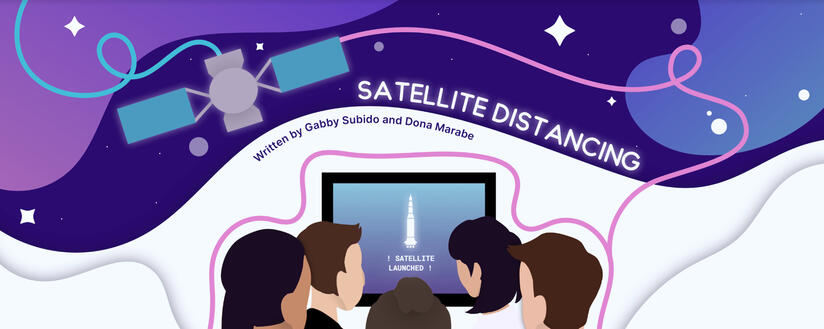
Brief Overview of the Global Pandemic
The COVID-19 pandemic has forced most countries into quarantine and, with everyone locked up in their homes, it’s difficult to imagine what goes on outside our homes. We, however, need to stay informed without running the risk of being infected. Lucky for us, safe data collection and transmission are made possible satellites!
These large objects orbiting our planet have been used for quite some time now, but their functions have become more relevant during this global catastrophe. How so? Let’s take a look at the different ways satellites are being used to combat the COVID-19 pandemic.
COVID Response
At first, it might be hard to imagine how space technology could be used in a totally different sector like healthcare. Little do we know, satellite imagery has proven to be quite useful in assessing the effects of the pandemic (Marathe & Ramakrishnan, 2013). They allow for data collection while keeping socially distanced. I mean, how much farther can you get?
Space technology goes hand in hand with computational epidemiology or the study of disease outbreaks using mathematical models and data (Marathe & Ramakrishnan, 2013). Basically, with the use of satellite imagery, experts can determine where outbreaks originate from by keeping close inspection of precise geospatial and demographic data (Marathe & Ramakrishnan, 2013). Experts can also evaluate lockdown efficiency by measuring the amount of nitrogen dioxide in the atmosphere (Bavandi, 2020). Less nitrogen dioxide means less human interactions which in turn, slows down the spread of the virus (Bavandi, 2020).
Business Adjustment
The pandemic has evidently shifted a lot of aspects in the business sector, with distribution channels and economical patterns changing and transitioning into highly virtual platforms. Satellite imagery paves the way for risk analysis and prediction based on economical and environmental factors. You’d be able to forecast possible disruptions by being able to see issues such as methane leaks, wind patterns, and ground temperature, and come up with possible alternatives without even needing to step out of your own homes (Banker, 2019). However, while satellite imagery is accessible, you’d still need a creative mind to be able to deduce its patterns into solutions by connecting them to the things happening around you.
NASA Space Apps
Satellite data have been so useful that NASA decided to hold an annual hackathon called the NASA International Space Apps Challenge. The hackathon encourages anyone to use NASA’s open data to solve real world problems (Nasa International Space Apps Challenge, n.d.). These range from using archival satellite data in analyzing communication methods, to ideating feasible solutions based on newly found patterns.
While in quarantine, NASA spearheaded two Space Apps Challenges. The first was the Space Apps COVID-19 Challenge, which was held by NASA on May 30-31 along with the European Space Agency, the Japan Aerospace Exploration Agency (JAXA), the Canadian Space Agency, and the National Centre for Space Studies. The latter was held on October 2-4, and was done as a virtual counterpart to the annual hackathon event proper.
A Filipino team rose as NASA Space Apps COVID-19 Challenge’s global winner for Best Use of Data with the mobile application called G.I.D.E.O.N. (Global Impact Detection from Emitted Light, Onset of COVID-19, and Nitrogen Dioxide). This app utilized various NASA data, Google’s mobility data, Trading Economics GDP data, John Hopkins University’s CoronaTracker, and more, to assess the effectiveness of lockdowns, and to measure the pandemic’s environmental and economical impact overall. (Barrameda et al., 2020)
Leisure and Mental Health
You don’t actually have to look too far away to appreciate the relevance of satellites in our lives. You just have to look at the TV screen right in front of you!
The system primarily works through a broadcast center, where your TV provider receives signals from different programming sources and sends the signals to geostationary satellites (Nice & Harris, 2002). These satellites then send the signals to satellite dishes that, in turn, send the signals to a receiver in your house, which is basically how we get to watch some of our favorite shows on the Discovery Channel and National Geographic (Nice & Harris, 2002).
Being stuck at home limits the amount of activities we can do nowadays. Watching TV is one form of leisure that helps us relax and reduces our sense of isolation (Abraham, 2020). Besides that, watching TV allows us to stay updated on the latest news about COVID-19 and the events happening in our own communities or even around the world. Watching TV is great and all, but don’t forget to get some fresh air or sunlight. There’s also lots of other things to do, you know!
Connectivity and Communication
During a time when social gatherings are highly discouraged, it becomes more challenging to keep in touch with friends, colleagues, and loved ones. Imagine if we experienced this pandemic years ago—back when things like the internet or text messaging were not invented yet. Luckily, satellites help us stay connected, no matter how far we may be from each other (and at a safe distance!).
Conclusion
Thought satellites were only used by astronauts, didn’t you? Well, think again! Even we, normal citizens, benefit from them. This just goes to show how much we need to invest in space technology, and how much more we can learn from the 5,774 satellites already orbiting our planet.
References
Abraham, M. (2020, October 10). Anxiety and television. Calm Clinic. https://www.calmclinic.com/anxiety/causes/television#:~:text=It%20can%20be%20used%20to,or%20engaging%20in%20other%20activities.
Banker, S. (2019, July 8). Satellite Imagery A Potent New Data Source For Supply Chain Management. Forbes. https://www.forbes.com/sites/stevebanker/2019/07/08/satelitte-imagery-a-potent-new-data-source-for-supply-chain-management/#33c4dd807bfd
Barrameda, H., Zapata, K., Tobia, N., Tan, T., & Castelo, M. (2020) G.I.D.E.O.N. NASA International Space Apps Challenge. https://covid19.spaceappschallenge.org/challenges/covid-challenges/integrated-assessment/teams/gideon/project
Bavandi, A. (2020, August 13). Five ways satellite data can help prepare for the unexpected. Financial Protection Forum. https://www.financialprotectionforum.org/blog/five-ways-satellite-data-can-help-prepare-for-the-unexpected#:~:text=Satellites%20monitor%20the%20effects%20of,potential%20to%20spread%20tropical%20diseases
Marathe, M. V., & Ramakrishnan, N. (2013). Recent advances in computational epidemiology. IEEE intelligent systems, 28(4), 96-101. https://doi.org/10.1109/MIS.2013.114
NASA International Space Apps Challenge. (n.d.). Who should participate in Space Apps. https://www.spaceappschallenge.org/about/who-and-why/
Nice, K. & Harris, T. (2002, May 30). How satellite TV works. HowStuffWorks. https://electronics.howstuffworks.com/satellite-tv2.htm

The Starry Path of Opportunities
Looking at the vast sky littered with stars, usually, you would think that working for NASA or having any job related to outer space would mean being a physicist, engineer, astronomer, or scientist. While most space-related careers fall under those fields, they don't have to be confined to being a scientist or mathematician. After all, outer space is very, very diverse. It has all sorts of things you could imagine. Therefore, wouldn't it make sense that space-related careers would be various as well? This variety spreads as far as art-related careers. In other words, it is very much possible to be an artist who does work related to outer space. Professions such as Aerospace Engineering, Architecture, and even Graphic Design, are only some examples. Let's start chasing after the stars and explore the limitless opportunities!
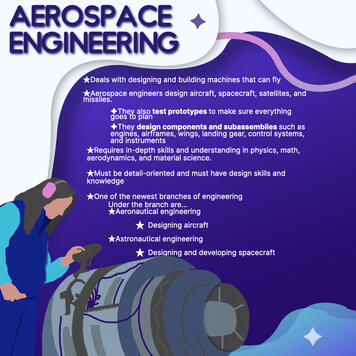
Aerospace Engineering
First up, Aerospace Engineering, it deals with designing and building machines that can fly. While this career is very involved in the sciences, some elements make it more artistic than you think. After all, not only does it require in-depth skills and understanding in physics, math, aerodynamics, and material science, but it also requires being detail-oriented and having design skills and knowledge. Aerospace Engineers usually design aircraft, spacecraft, satellites, and missiles. They also test prototypes to make sure everything is going smoothly, and they develop components and subassemblies as well. Examples of these are engines, airframes, wings, landing gear, control systems, and instruments.
Aside from that, this branch of engineering is one of the newest, and it only has two specialties. These are Aeronautical Engineering, which specializes in designing aircraft, and Astronautical Engineering specializes in designing spacecraft. Not only that, but many astronauts were aerospace engineers. Some notable ones are Kalpana Chawla, the first Indian-born woman in space, and Neil Armstrong, the first man on the moon. Other well-known aerospace engineers are Boback Ferdowski, the flight director for NASA's Mars Curiosity Rover mission, and Burt Rutan, who owns a company called Scaled Composites. His company designed SpaceShipOne, which is the first non-government manned spacecraft.
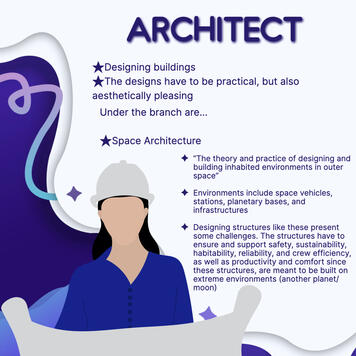
Architect
Next on the list of careers that are space and art-related are Architects. In simple terms, Architects design buildings. However, not only do those buildings have to be aesthetically pleasing, but also functional and practical. So when an architect designs a house, it should look nice, AND it should also provide proper support and shelter for whoever will live in it. Some famous architects include Leonardo da Vinci, Michelangelo, and Christopher Wren.
So how does architecture relate to outer space? There is a field under it called Space Architecture, and according to the Space Architecture organization, it is defined as "The theory and practice of designing and building inhabited environments in outer space." These environments include space vehicles, stations, planetary bases, and infrastructures. However, designing structures like these presents some challenges. After all, these structures are meant to be built on other planets or moons, which may have extreme environments. Ensuring and supporting safety, sustainability, habitability, reliability, crew efficiency, and productivity and comfort are the main challenges of designing buildings meant for outer space.

Graphic Designing
Keep chasing that dream because Graphic Designers could work for NASA, despite it being a very artistic career. In a nutshell, Graphic Designers create visual content intending to communicate a message. To do this, they apply visual hierarchy and page layout techniques, and they use typography and pictures. With this in mind, these designers can make anything from posters, billboards, packaging, logos, and marketing materials. They also select photos, typefaces, and layouts for advertisements, annual reports, brochures, and magazines.
So to touch on what was said earlier, these designers could work for NASA. An excellent example of this is the Graphic Designer, Heather Roper. She worked for NASA, participating in the OSIRIS-REx mission, a mission to successfully collect samples from an asteroid named Bennu. As part of the Communications and Public Engagement team, Roper worked with scientists to create graphics and visual content that explain the OSIRIS-REx mission to the public. Some examples of what she would do are making infographics that describe what's happening in the mission and the science behind it, creating graphics that visualize the spacecraft around the asteroid, and designing the mission's commemorative poster. The OSIRIS-REx commemorative poster is released each year along with the mission's significant milestones. Being a Graphic Designer, Roper says that she enjoys the challenge of visually depicting the mission's science and showing people things that can't be seen.
Grasping The Dream
As you can see, science and art may not be so different. After all, jobs such as Aerospace Engineering, Architecture, and Graphic Design all have the potential to be a space-related career. Now that we live in very trying times, it is especially important to be presented with as many opportunities as possible, even ones you never thought were available. This pandemic led numerous people to lose their jobs, and it has closed the doors of opportunity for many. Now that we recognize that reaching for the stars may not be so far-fetched for artists out there, hopefully, this may bring outer space a little closer to a lot more people, and encourage others to grasp for their dream.
References
Aerospace Engineer. (n.d.). National Careers Service.
https://nationalcareers.service.gov.uk/job-profiles/aerospace-engineer
Collins, P., Gowans, A., Ackerman, J.S., & Scruton, R., (2019, October 10). Architecture.
Encyclopedia Britannica. https://www.britannica.com/topic/architecture
Graphic Design. (n.d.). Interaction Design Foundation.
https://www.interaction-design.org/literature/topics/graphic-design
Lucas, J. (2014, September 5). What is Aerospace Engineering? LiveScience.
https://www.livescience.com/47702-aerospace-engineering.html
NASA. (2019, July 23). OSIRIS-REx. NASA Science: Solar System Exploration.
https://solarsystem.nasa.gov/missions/osiris-rex/in-depth/
NASA. (n.d.). Heather Roper. NASA Science: Solar System Exploration.
https://solarsystem.nasa.gov/people/289/heather-roper/
Talley, J. (n.d.). What does a graphic designer do. Media Bistro.
https://www.mediabistro.com/climb-the-ladder/skills-expertise/what-does-a-graphic-designer-do/
Welcome to SpaceArchitect.org. (n.d.). SpaceArchitect. https://spacearchitect.org/

Spacing Out?
Looking to watch some TV shows, documentaries, or movies about space? Or play some fun video games exploring planets and meeting aliens? Here, we have our top 10 recommendations for space media you should check out!:
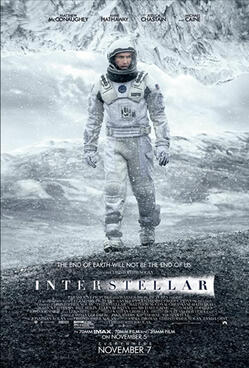
Interstellar
Year released: 2014
Starring: Matthew McConaughey, Michael Caine, Jessica Chastain
Can you imagine if the Earth were dying, NASA was gone, and a wormhole was just beyond Saturn? Now, you can go see it for yourself! Interstellar is a movie where all that happens and more—black holes, time dilations, and wormholes, all in a tale of the survival of the human race.
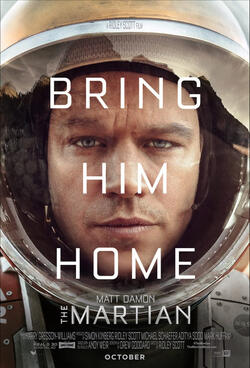
The Martian
Year released: 2015
Starring: Matt Damon, Jessica Chastain, Benedict Wong
Stranded on Mars? Teammates abandoned you? What do you do? Science the science out of what you’ve got. This is what astronaut Mark Watney does in this movie, the Martian, a tale of human survival and how humanity unites as one to save one little astronaut on some other planet. Mars, just like the rest of space, is cold and dangerous, but Watney proves that human ingenuity and having the will to survive will get you out of even the worst situations.
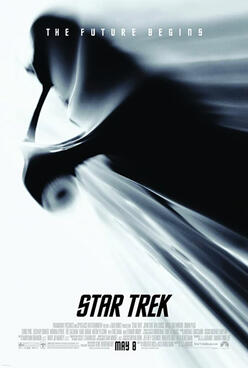
Star Trek
Year released: 2009
Starring: Chris Pine, Zachary Quinto, Leonard Nimoy
It’s the year 2258. Humans have finally made contact with aliens—giant spaceships that can travel faster than light and visitors that come from an alternate universe. This is the story of Star Trek (2009), a film about James T. Kirk, a reckless human, and Spock, a logical half-Vulcan, half-human, as they go on the USS Enterprise’s maiden voyage, fight the Romulans, meet new allies, and boldly go where no man has gone before.
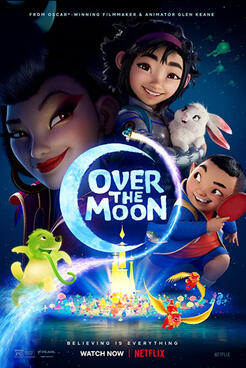
Over the Moon
Year released: 2020
Starring: Cathy Ang, Phillipa Soo, Ken Jeong
Have you ever wondered what it would be like to go to the moon? Are there goddesses there? Fei Fei believes there are, and she wants to find out. Join her as she goes on an adventure to meet Chang’e, the goddess of the moon, alongside her brother and rabbit, on a tale to prove her existence. Believe she will because believing is everything.
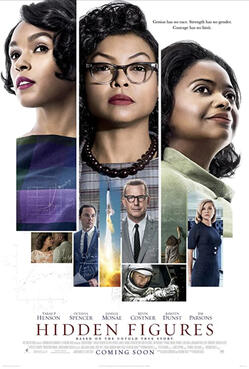
Hidden Figures
Year released: 2016
Starring: Janelle Monae, Octavia Spencer, Taraji P. Henson
Katherine Johnson. Dorothy K. Vaughan. Mary Jackson. Three of the greatest minds in NASA’s earliest days, without whom, John Glenn would not have orbited around Earth. This movie shows the struggles, hardships, and successes they faced as they turn the space race around and give NASA the hope to send humans even further. Their story proves that anyone, regardless of color or gender, can change the course of history.
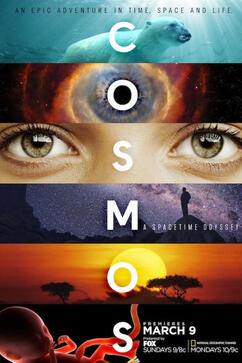
Cosmos: A Personal Voyage (1980)/Cosmos: A Spacetime Odyssey (2014)/Cosmos: Possible Worlds (2020)
Year released: 1980 (A Personal Voyage), 2014 (A Spacetime Odyssey), 2020 (Possible Worlds)
Starring: Carl Sagan, Neil deGrasse Tyson
Carl Sagan (1980) or Neil deGrasse Tyson (2014, 2020), depending on which series you’re watching, takes you on a journey throughout the cosmos. Come aboard the Ship of the Imagination, a vehicle that allows its passengers to see places that wouldn’t be seen with only modern technology. With their undying enthusiasm for science, they explore the origin of life, supernovas, life on other worlds, higher dimensions, and so much more. So, if you love science and adventure, fasten your seatbelts because this is going to be one heck of a ride!
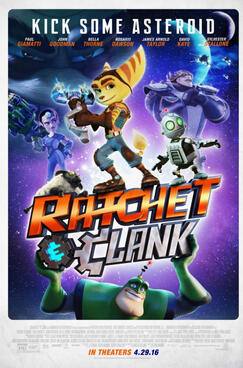
Ratchet and Clank
Wacky weapons? Check. Cat-like alien and robot? Check. Planet hopping? Check. All of these can be found in Ratchet and Clank, a video game series on PlayStation, featuring Ratchet, a cat-like alien, and Clank, a robot, as they travel from planet to planet, acquiring all sorts of crazy weaponry, meeting new friends along the way, and fighting enemies like Dr. Nefarious and Emperor Tachyon, who desire to take over the galaxy and even time itself.

E.T.
Year released: 2010
Artists: Katy Perry ft. Kanye West
“You’re so hypnotizing,” says Katy Perry in her song E.T., featuring Kanye West. With its otherworldly vibes and lyrics, complete with a surreal and visually stunning music video that only adds to its otherworldliness, you definitely won’t break out of this song’s alien hypnosis! It’s truly extraterrestrial!

Ender’s Game
Year released: 1985
Written by: Orson Scott Card
Aliens called the Formics to invade Earth. Humans recruit the best young minds of the planet and train them in Battle School to prepare for future invasions. One such mind is a young boy named Ender Wiggin, who has an unmatched talent for strategy and leadership. In Battle School, he trains to become the best of the best alongside other talented kids and prepares to fight the Formics once and for all. Will Ender prove that he is the best of the best? Will the Formics come back to destroy Earth? Find out in this story!
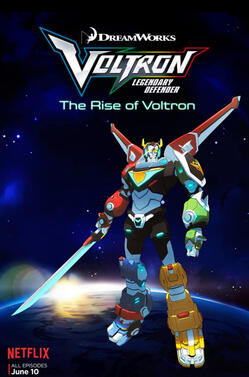
Voltron: Legendary Defender
Year released: 2016
Creator: Dreamworks
Five space explorers, Shiro, Keith, Lance, Pidge, and Hunk, find a blue robot lion that takes them to the planet Altea. There, they meet Princess Allura, and learn about the legendary defender Voltron, formed when five lions come together and form one giant robot. But the Galra empire stands in their way, and Emperor Zarkon won’t stop at anything to seize Voltron. With 8 seasons of drama, action, comedy, and giant robot lions, watch them as they become the universe’s greatest defender!
Conclusion
Well, there are so many more space movies, games, and media recommendations we would love to share with you, but these ones are our top picks. You can always find more media on the Internet, and who knows? Maybe one day you can recommend to us your top space picks!
References
Cofield, C. (2015, October 15). ‘The Martian’ might be the most realistic space movie ever made. https://www.space.com/30831-the-martian-most-realistic-space-movie-ever.html
(n.d). Interstellar (film). https://interstellarfilm.fandom.com/wiki/Interstellar_(film)
Pyle, R. (2020, March 10). ‘Cosmos: Possible Worlds’ episode one takes viewers on a wild ride with the Ship of the Imagination. https://www.space.com/cosmos-possible-worlds-episode-1-recap.html